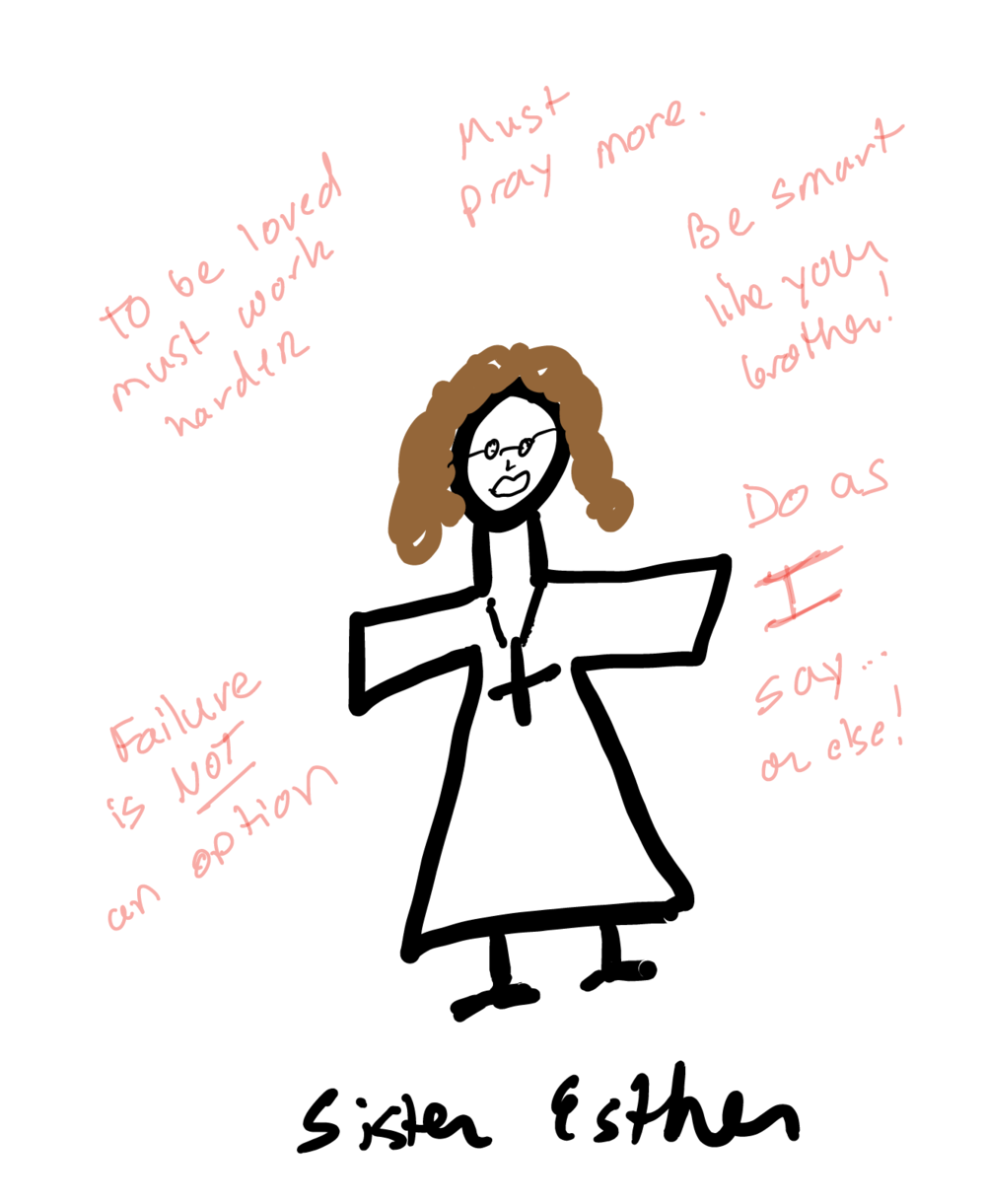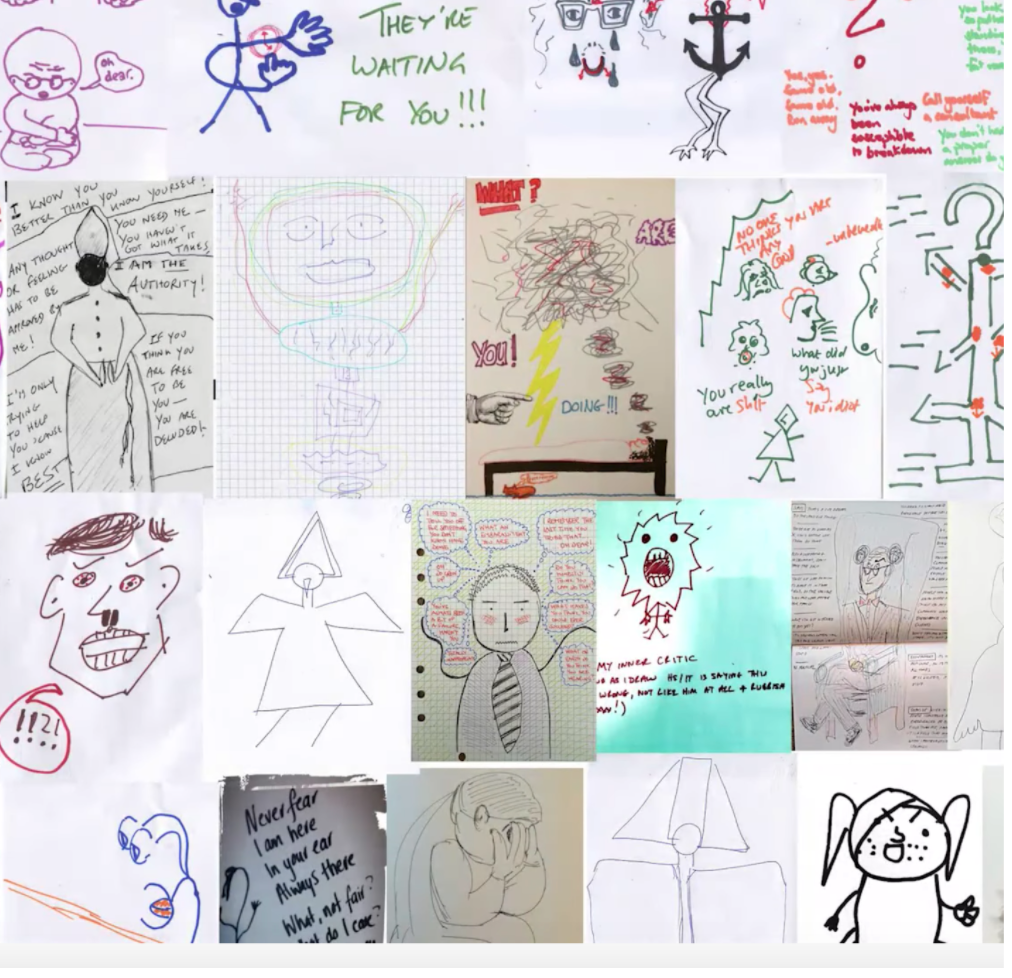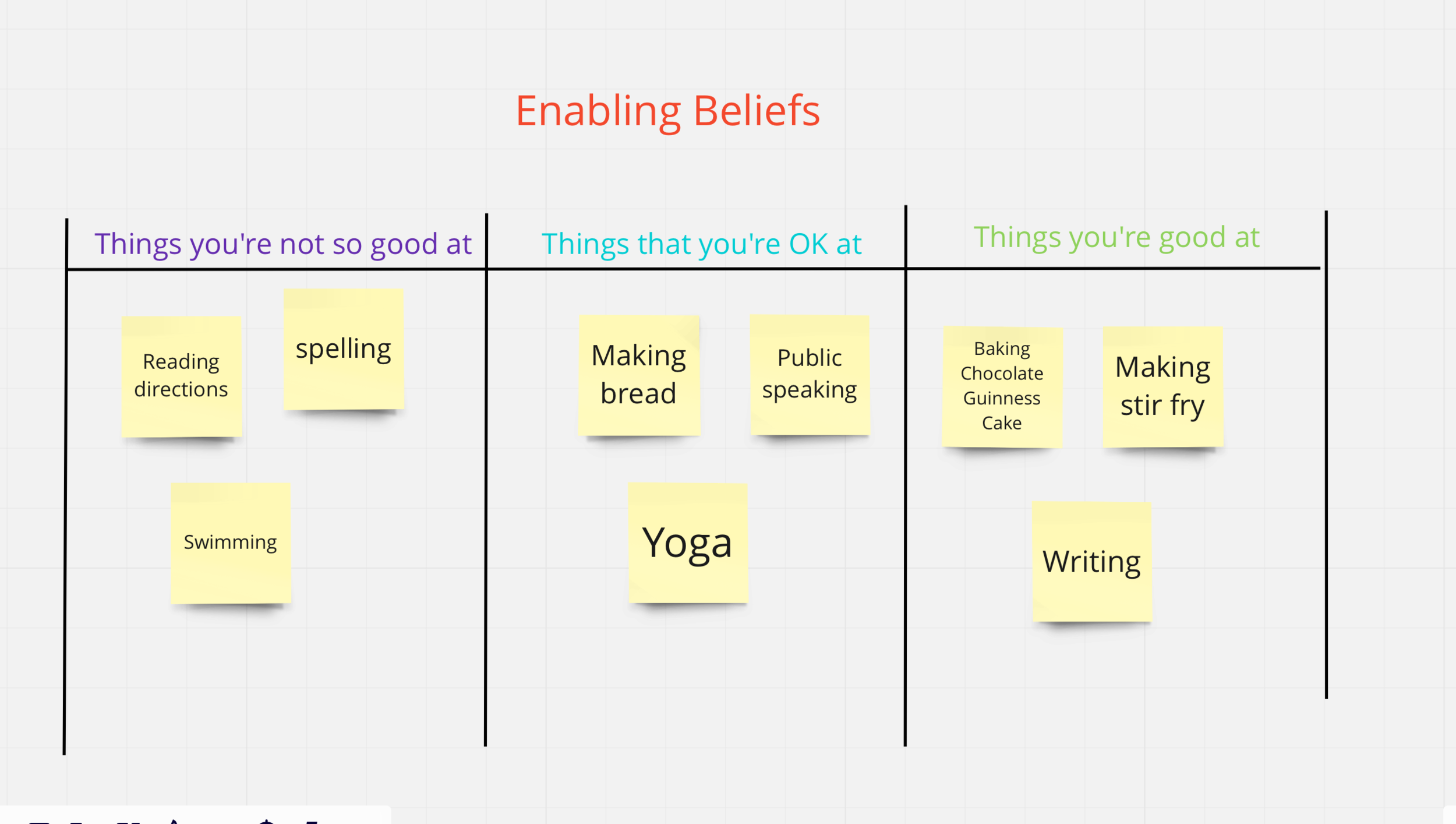Breaking the cycle of self-doubt: 5 ways to stop feeling like an imposter (Part 2)
The foundation of a healthy, cohesive and effective organisation - product or otherwise - is healthy and well people.
We may not realise it, especially in our remote-working world, but the feelings and emotions that each person experiences impact their team members, and the collective team feelings and emotions impact the wider organisation. It is a chain reaction.
The work that I do with organisations - be it working with leadership teams, product teams or entire product organisations - focuses on all three of these levels: individual, teams and organisation. Working on one and not the other just doesn’t make sense.
Healthy individuals are the foundation for healthy teams and a healthy organisation. Source: “Hiring Product Managers: Using Product EQ to go beyond culture and skills”
As mentioned in last week’s post, it’s estimated that imposter phenomenon will impact about 70% of us at some point in our lives. It’s a fundamental blocker that I often see in one-on-one or team sessions. It stops many of us as we try to do our best work and live our best lives.
My hope with this series on imposter phenomenon is that by understanding what these feelings are, where they may be coming from and how we can break the cycle of self-doubt, that we can create opportunity for change in the person, the team and, yes, the organisation.
Seems simple… right? Well, with anything that touches on human emotion and psychology, it may be easier said than done. But let’s see what we can do!
Last week I shared a high-level look at imposter phenomenon (the more accurate description of what is widely known as imposter syndrome) and how working remotely intensifies these feelings. This week, we’ll talk about:
What imposter phenomenon really is (according to one of the women who coined the term).
Where the feelings and limiting beliefs related to imposterism may come from.
5 ways you can better understand and live with imposter phenomenon
Let’s start by taking a look at a more formal understanding of imposter phenomenon.
What is Imposter Phenomenon?
“I’ve run a game on everybody and they’re going to find me out.”
-Maya Angelou, multi award-winning author and recipient of the Presidential Medal of Freedom
In a National Public Radio interview (NPR) one of the women who first coined the phrase imposter phenomenon, psychologist Suzanne Imes, describes it:
“It’s a sense among many high-achieving people ‘that they're not as intelligent, as bright, as creative, as able as other people think they are. And they live in a constant fear that somebody is going to find that out."
Those of us who experience imposter phenomenon have a hard time internalising success. Instead of something good that has come from hard work and commitment, we view achievements as simply a result of luck. And conversely, anytime things don’t work out it’s a personal failing.
These feelings can build on top of each other, allowing us to create stories of what we believe is true (we’re simply not good enough) instead of the reality of the situation. (We’re just as good as everyone else. Just as smart. Just as worthy of success.)
The grander our imposter-fuelled stories become, the harder they are to dismantle and the bigger their potential impact is on our lives, relationships and careers.
Here’s just a few examples of the impact of imposter phenomenon on clients and friends that I’ve noticed:
A woman who turned down a dream promotion because she didn’t feel she was smart enough or good enough for the role.
Many women that I work with are hesitant to apply for a job because they feel they don’t have all the skills listed in a job description (thus not qualified or good enough).
Men and women who are hesitant to speak up in meetings because they’re afraid to sound stupid.
A male friend of mine constantly moves from job to job because he’s convinced he can’t do the latest job that he’s been hired for - so he leaves and rejects the job before it rejects him.
Personally, I know I’ve turned down work in the past simply because I didn’t think I could do it. Imposter phenomenon is a crippling sense of self-doubt that limits our ability to grow and become the best we can be.
Where do these feelings come from?
Without diving too far down a rabbit hole on the psychology behind imposter phenomenon, it’s safe to say that there isn’t one, universal explanation to where it comes from. Some experts believe there’s a strong connection with childhood memories and that sibling rivalry or pressure to achieve high grades in school left a lasting impact that created habitual reactions, thoughts and behaviours that are still driving us as adults.
In a recent interview in Time magazine, psychologist Audrey Ervin explained, “People often internalize these ideas: that in order to be loved or be lovable, ‘I need to achieve.” The relationship between achievement and feeling supported, loved, and safe becomes a self-perpetuating cycle; almost an addictive way of thinking.
In her book, The Coach’s Survival Guide, Kim Morgan describes this cycle as well, “People who experience Imposter syndrome push themselves hard to compensate for their feelings of inadequacy, often leading to even more success, which in turn results in even greater feelings of being an imposter.”
Environmental and institutional discrimination can also play a role in creating feelings of imposter phenomenon. According to Andrea Salazar-Nuñez, a licensed psychologist at the University of Washington in Seattle, "For people of color and especially women of color, impostor syndrome is ... influenced by the messaging that we've received from day one.” “If you're in a context where you're in a minority, you're more likely to feel like an impostor,” Imes added in the NPR interview.
So, while the exact source of feelings of imposterism varies dramatically, the outcome is the same: from experiences throughout our lives we have formed limiting beliefs around who we are and what we’re capable of - be it professionally or personally - and we accept them as truth. This makes it extremely challenging to accept any success we experience as real.
And, while there may not be a magic wand to wave to combat these beliefs, there are things we can try, experiments we can put in place to help us understand them better and stop them from being debilitating.
How to better understand and live with imposter phenomenon
“[N]othing important, or meaningful, or beautiful, or interesting, or great ever came out of imitations. The thing that is really hard, and really amazing, is giving up on being perfect and beginning the work of becoming yourself.”
— Anna Quindlen
Over the years I’ve tried many different approaches to get past my own imposter phenomenon. Some have worked, some haven’t. I thought I’d share the five that have been most impactful for me. But a note of caution: while I would absolutely love to say that if you do these five things you can be cured of imposter phenomenon, we all know it’s not that easy (if so, I’d be pretty rich!).
However, I will say that each of these provided me with an opportunity to learn more about myself, my beliefs, my actions and emotions. And with each new nugget of understanding I’ve grown in confidence in myself and my capabilities, shifting my feelings of self-doubt to actually giving myself the benefit of the doubt.
So here, goes!
5 ways to stop feeling like an imposter:
Name it (I mean really name it... And draw it out too!)
Challenge your feelings and limiting beliefs in real time
Focus on your enabling beliefs
Phone a friend
Ask for help
1. Name it (I mean really name it... And draw it out too!)
A few years ago I took a coaching course where we spent an afternoon exploring our own limiting beliefs (Limiting beliefs are the thoughts, beliefs and stories that we tell ourselves and hold as truth of who we think we are, and what we think we’re capable of. Our limiting beliefs can be strong contributing factors to imposter phenomenon.)
That afternoon, we spent time actually creating a character that symbolised and embodied these limiting beliefs, named the character, and even drew a picture of it. Then we shared it with a partner.
Mine was “Sister Esther” - named after a rather strict nun who taught me years ago in Catholic grade school. (Go ahead and read into that one.)
My inner critic, Sister Esther
Steve Chapman, speaker, writer, consultant and artist who specialises in exploring creativity and the human condition, talks about his own experiences creating a puppet and identity that represented his inner critic in his TedEx Talk, entitled “This talk isn’t very good: Dancing with My Inner Critic.” He told others about the puppet, and found that they too had similar feelings and shared drawings of their own inner critic. Here’s just a few of them:
Images from Steve Chapman and his friends of their inner critics
What does your inner critic look like? Can you visualise it? From my experience, naming, visualising and talking about my critic as if it were a real person made it seem less powerful, less scary and something that I could actually respond to.
Give it a try! And when you do, share it with someone. Talk about it. I’d love to see it, if you’re up for sharing. You can send it to me here.
2. Challenge your feelings of imposterism and limiting beliefs in real time
The next time you catch yourself feeling like a fraud or not good enough, take a few minutes and reflect on these questions:
What is the story that I’m telling myself?
What is my limiting belief behind this?
Is it true? What evidence or facts do I have to support it?
How is this belief serving me ?
What would an alternative belief be? (Be daring, be creative and think of something that’s conducive to growth and happiness.)
How could you test this alternative belief? What small thing could I do to try this out?
The ability to identify and capture these thoughts and emotions in real time is huge step forward. By answering these questions you’ll become more aware of what triggers this thinking and how it is impacting your work, your relationships and much more. Go one step further and talk about your experience with a friend, coach or therapist. From my experience, saying the story out loud to someone I trust helps me to realise that what i’m falling back on are old thought patterns that aren’t serving me in the present; and that I have the power to change that.
3. Focus on your enabling beliefs - Enabling beliefs help us create positive behaviour change. In her interview with NPR Imes recommends a simple exercise to help us identify and build our enabling beliefs. It involves creating three columns:
the first lists out the things that you’re not so good at
the second, things you’re OK at
the third are things that you're very good at
Write down everything that you can think of. How does it feel to see that while we’re not good at some things, there are others that actually excel at?
Here’s my take on Imes’ enabling beliefs exercise. I’ll be sharing virtual tools like this Miro board to help you capture enabling beliefs and limiting beliefs. Sign-up to my newsletter to receive them in your in-box.
4.Phone a friend - Just as Steve Chapman shared his inner critic with friends, it’s a great idea to reach out when feelings of imposterism start to feel overwhelming.
Personally, when I start to feel self-doubt creeping up, I’ve started to go outside and call a friend for a chat while I go for a quick walk. Even just a five-minute distraction can make all the difference and help me break the cycle of self-doubt and feelings of imposterism.
Remember, what we’re trying to do is break a bad habit and re-form our behaviours - a distraction as simple as a conversation with a friend and a quick change of scene can stop us from automatically diving into those strangely comfortable feelings of self-doubt.
5. Ask for help - Be that from a friend, partner, family member, coach or therapist. Consistent feelings of imposterism can be an underlying sign of depression, anxiety and low self-esteem and should be acted on. Remember, while feelings of imposterism may make us feel alone, we’re not.
Last but certainly not least, please remember that this type of change is often based on core beliefs that have been with you a long time. It will take time and commitment to change, but it’s possible.
Take a moment to think about what you would do if you didn’t let feelings of imposterism impact your life. How would that feel? What would you do differently? Write it down in as much detail as you can.
Isn’t it worth it to try and make that reality?
Subscribe to Product Leadership Essentials
Sign-up to my email newsletter to learn more about how to better understand and build your authentic Product Leadership skills.





